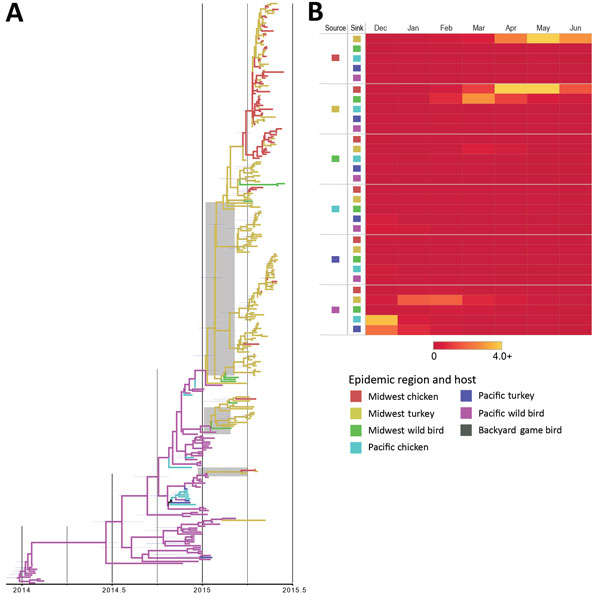Volume 24, Number 10—October 2018
Research
Transmission Dynamics of Highly Pathogenic Avian Influenza Virus A(H5Nx) Clade 2.3.4.4, North America, 2014–2015
Figure 3

Figure 3. Phylogeographic reconstruction of source–sink dynamics of highly pathogenic avian influenza virus A(H5N2) outbreak, United States, 2014–2015. A) Phylogenetic tree of hemagglutinin gene of H5N2 isolates. The geographic region and host type were defined in the model as discrete nominal character states, and the number of state transitions at tree nodes was counted. The character states included in the phylogenetic model (Midwest chicken, Midwest turkey, Midwest wild bird, Pacific chicken, Pacific turkey, and Pacific wild bird) are indicated. Black nodes and branches represent an ancestral reconstruction that is highly uncertain, sharing equal probability between Pacific wild bird and Pacific turkey. The shaded boxes represent the time between the introduction of the virus into Midwest poultry populations and the first detection of the virus within the population. B) Heat map showing source–sink dynamics and average number of transitions per location per year (0–4.0).
1Current affiliation: University of Connecticut, Storrs, Connecticut, USA.